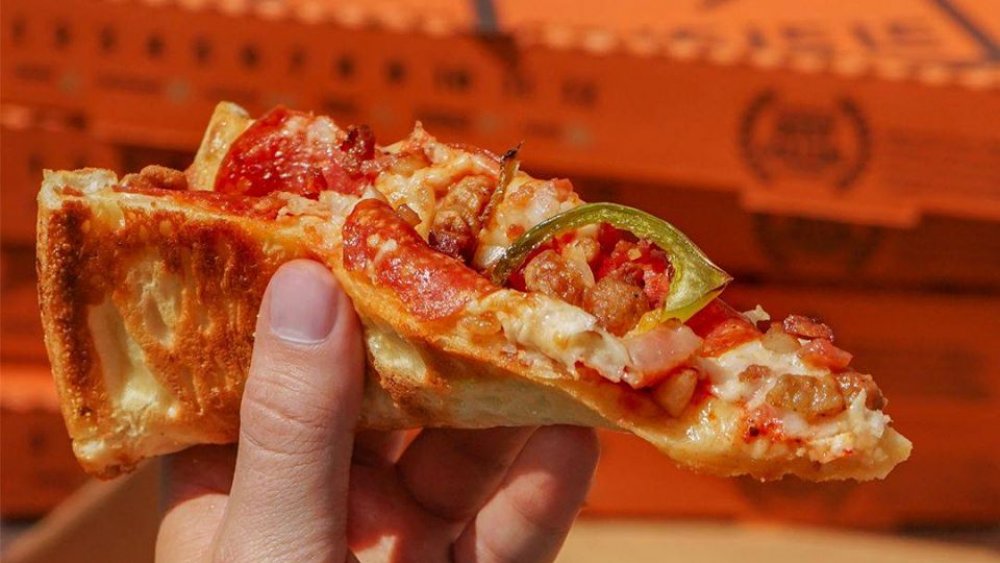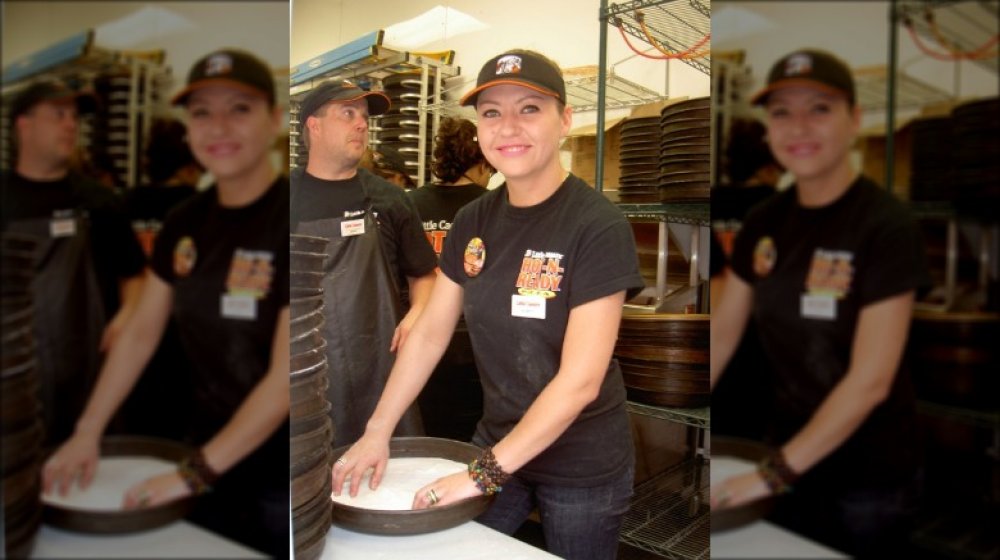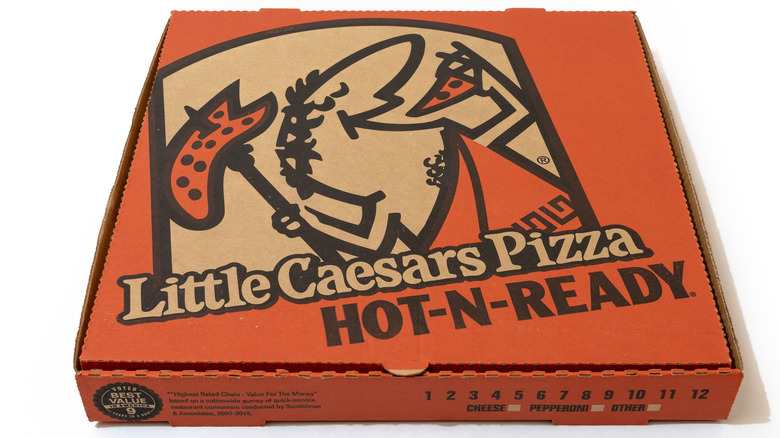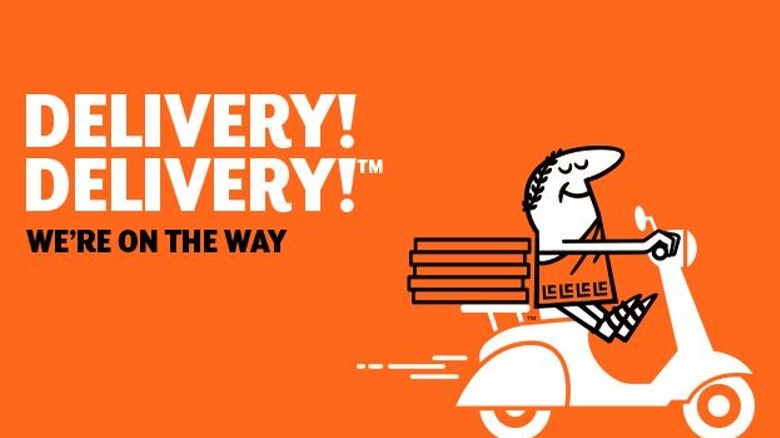How Little Caesars Pizza Is Really Made
Little Caesars Hot-and-Ready pizza is one of the wonders of the fast-food world — how is it not only so cheap, but available so quickly? As one commenter on the Straight Dope forum tells it, "Went by Little Caesars drive thru last night. Ordered the three meat HOT-N-READY. The lady had it in her hand when I pulled up to the window. That's faster service than McDonald's or Wendys," then asking, "How are they making this magic happen? "
Some have speculated that Little Caesars is just nuking frozen pizzas — and there was even quite the scandal when a viral video (via USA Today) seemed to indicate that the frozen pizzas in question were actually DiGiorno brand (yes, that brand that rose to fame on the back of their "it's not delivery, it's DiGiorno" slogan). What the video showed was just a coincidence, however — the Little Caesars customer with a cart full of frozen pizzas was actually patronizing one of the chain's locations inside of a Kmart. Turns out she'd previously purchased those pies before stopping to satisfy that instant craving that tends to strike many as they pass by a Little Caesars and realize — yes, it's true, you really don't need to wait 20+ minutes for your pizza to be cooked!
OK, so Little Caesars' pizza is not your top-of-the-line wood-fired pizza with buffalo mozzarella and artisan pancetta, but it is, at least, made from scratch.
The Little Caesars pizza-making technique
Several past and present Little Caesars employees on Quora provided similar descriptions of the process by which Little Caesars preps their pizzas. First, batches of dough are mixed up every day but may be refrigerated for up to three days before being used. The sauce is also prepared fresh daily from bagged tomato paste which is mixed with their own spice blend and water.
When it's time to make the pizzas, the dough is stretched onto a cornmeal-coated pan and marked with a three-hour expiration time. Prior to baking, each crust is sauced (four ounces per medium pizza), sprinkled with cheese (five ounces for a medium), and dressed with toppings (unless intended to be cheese pizzas). The pizzas are then loaded into racks and baked via a conveyor belt oven for around five to six minutes.
What happens once the pizza's done?
After the pizza comes out of the oven it is then sliced up and packaged in a cardboard box bearing the chain's distinctive logo. This logo features a toga-clad, laurel-wreathed Julius Caesar. Happy as a Roman emperor, cartoon Caesar gobbles down a slice of pizza while the rest of the pie is impaled on his spear.
Many of these boxed pizzas will find their way into a Hot-N-Ready warmer, something that's been a Little Caesars mainstay since 1997. The maximum amount of time a pizza will spend in that warmer is (or should be) just 30 minutes; after that amount of time, the pizzas are deemed to be insufficiently fresh for walk-in customers. These slightly past-their-prime pizzas won't necessarily go to waste, however. An article published in the Martinsville, Indiana Reporter-Times indicates that the local Little Caesars has been known to donate unsold pizzas to an organization that distributes food to the economically disadvantaged.
Little Caesars will even deliver that pizza now
Up until just recently, one place pizzas would not be going was into a Little Caesars-branded delivery vehicle. While the chain did offer delivery service in the 20th century, for the first two decades of this millennium it preferred to outsource the function to third-party operators such as GrubHub, Door Dash, etc. Apparently, the feeling was that the delivery market was crowded and competitive, so the chain felt that it was best to outsource the delivery and put its focus on walk-in customers instead.
With the kind of timing that makes you wonder if Little Caesar's employs a company psychic, the chain chose to re-implement delivery in January 2020. It did so because it felt it could finally do so in a cost-effective manner, but the move proved to be beneficial when, just a few months later, delivery was suddenly the only game in town. Well, that and drive-thru, but not all Little Caesar's locations offer this option. Delivering pizzas to those home-bound by the pandemic proved pretty profitable for the chain, but it gave back to the community, too, and donated numerous pizzas to healthcare workers and first responders. Perhaps partly as a result of this goodwill, or just the added convenience of delivery, sales figures kept on growing even after the lockdown ended. With so much momentum, the chain doesn't appear to be slowing its roll (or breadstick) any time soon.



